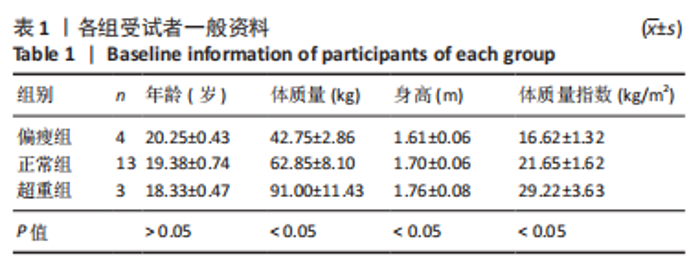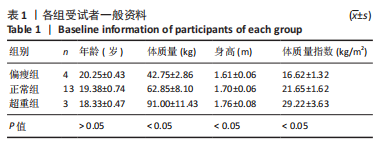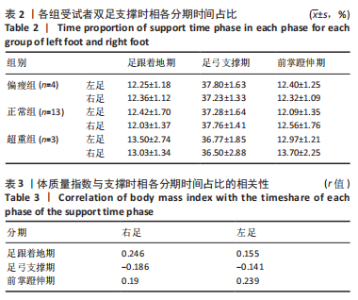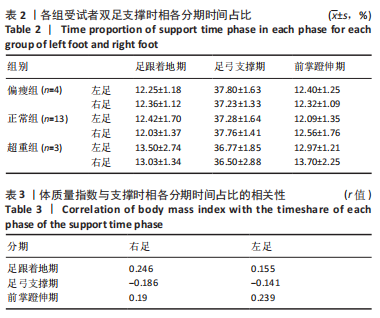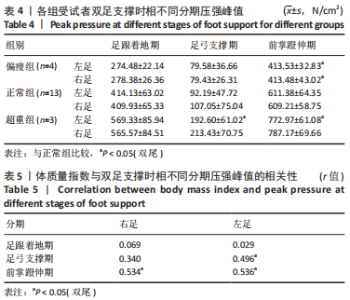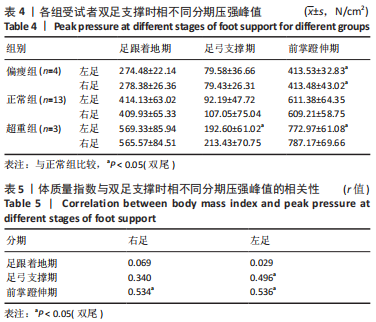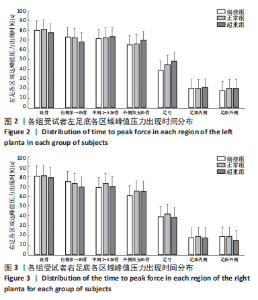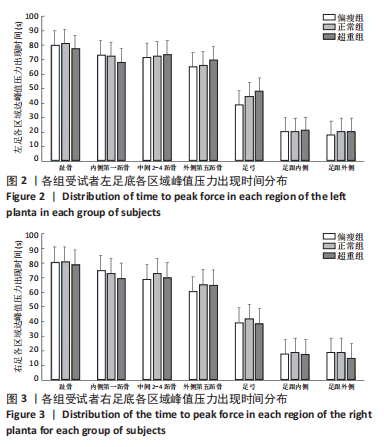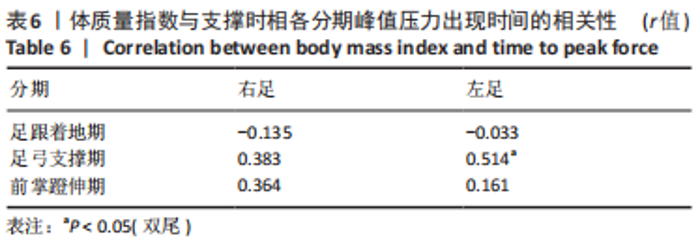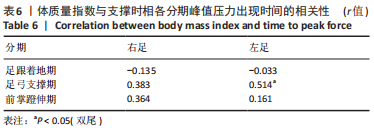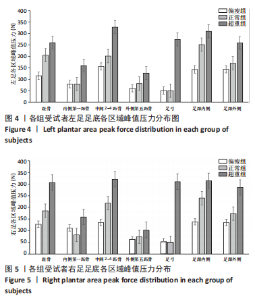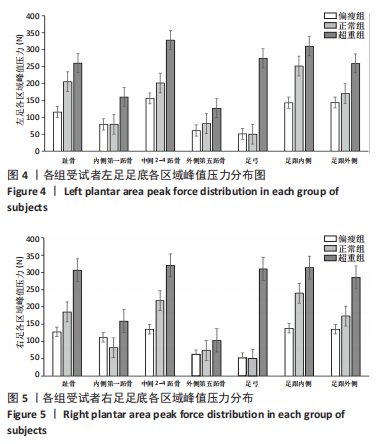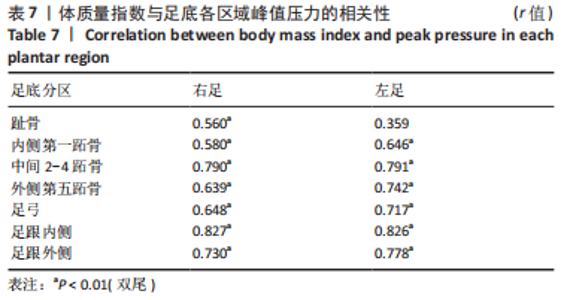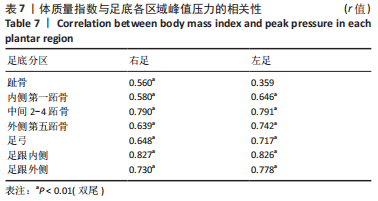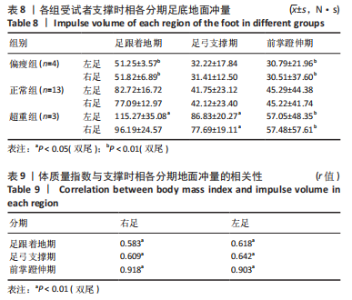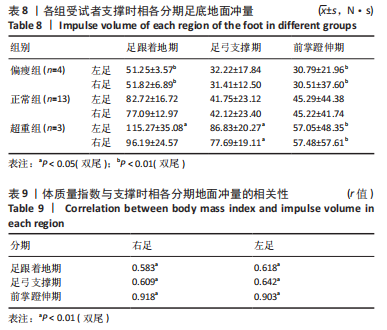[1] 周文琪,袁正,冉静,等.髌股关节疼痛患者足底压力评估模型构建[J].医用生物力学,2022,37(4):748-753.
[2] 孟站领,张庆来,苑玲伟,等.不同跌倒风险老年人跨越障碍前后足底压力特征[J].医用生物力学, 2022,37(4):741-747.
[3] 黄兆欣,张艺,崔晨曦,等.基于ICF的青年女性“内八字”步态生物力学分析[J].中国康复理论与实践,2022,28(12):1459-1465.
[4] 王欣,罗文,黄文泽,等.单侧膝骨关节炎临床分期与双足足底压力的相关性[J].中国组织工程研究,2021,25(27):4312-4317.
[5] 范育飞.不同运动形式对足底压力影响的实验研究[D]. 苏州:苏州大学, 2012.
[6] 蒋立峥,马玉宝.不同负重条件对健康人步态影响的研究进展[J].中国老年保健医学,2020,18(4):108-111.
[7] 穆成成,廖俊帆,罗亚平.负重对足底压力特征的影响研究[J].铁道警察学院学报,2020,30(3):69-74.
[8] 赵敬,李新伟,何秉泽,等.基于运动学参数和足底压力测量的髋离断截肢者步态分析[J].医用生物力学,2022,37(1):79-84.
[9] 张琪,TOLENTINO JANEL,孙成彦,等.基于足底模型的痉挛性脑性瘫痪儿童步态生物力学特征分析[J].康复学报,2022,32(6):489-495.
[10] 江海,于瑜,刘志成,等.体外冲击波与注射皮质激素治疗足底筋膜炎:足底压力及步态分析比较[J]. 中国组织工程研究,2021,25(21):3286-3291.
[11] ZHANG LY, LIU QL, YICK KL, et al. Analysis of Diabetic Foot Deformation and Plantar Pressure Distribution of Women at Different Walking Speeds. Int J Environ Res Public Health. 2023;20(4):3688.
[12] MONTEIRO RL, FERREIRA JSSP, SILVA EQ, et al. Feasibility and Preliminary Efficacy of a Foot-Ankle Exercise Program Aiming to Improve Foot-Ankle Functionality and Gait Biomechanics in People with Diabetic Neuropathy: A Randomized Controlled Trial. Sensors (Basel). 2020;20(18):5129.
[13] LEE JH, SHIN KH, JUNG TS, et al. Lower Extremity Muscle Performance and Foot Pressure in Patients Who Have Plantar Fasciitis with and without Flat Foot Posture. Int J Environ Res Public Health. 2022;20(1):87.
[14] MALAKOUTIKHAH H, MADENCI E, LATT LD. The impact of ligament tears on joint contact mechanics in progressive collapsing foot deformity: A finite element study. Clin Biomech (Bristol, Avon). 2022;94:105630.
[15] 果森,曲峰,王智,等.步态分析在足踝外科疾病中的应用进展[J].足踝外科电子杂志,2021,8(3):55-58.
[16] 王俊思,白姣姣,孙皎,等.基于足形与足底压力的老年糖尿病危险足护足鞋具的设计与应用研究[J].军事护理,2023,40(2):28-32.
[17] 张玲,李开庭,余和平.足底压力分析在足底筋膜炎评估中的应用研究进展[J].现代医药卫生,2020,36(15):2415-2418.
[18] 闫松华,董灿,杨进,等.性别与BMI对儿童动态足底压力分布的影响[J].医用生物力学,2010,25(5):363-368.
[19] 熊昌军,李朋,张延超,等.胫骨侧个性化髓外定位技术行人工全膝关节置换术后胫骨假体冠状位力线的评价研究[J].中国修复重建外科杂志,2022, 36(2):177-182.
[20] 汤运启,姜雯,麻艳妮.青年男性体重指数对足底动态压力分布的影响研究[J].中国皮革, 2014,43(22):126-131.
[21] 王庭槐.生理学[M].北京:人民卫生出版社,2018.
[22] 赵芝,吴明方,李新梅,等.中国大学生46例足底压力分布测量[J].中国组织工程研究与临床康复,2008,12(46):9062-9065.
[23] 胡晓梅,唐文静,马璐钰,等.扁平足及矫形鞋垫影响其足底压力的研究进展[J].按摩与康复医学,2020,11(22):33-34.
[24] 韩艳坤,霍洪峰.扁平足患者足型及步态特征研究[J].中国康复医学杂志, 2020,35(4):434-439.
[25] 张腾丹,郭威.青年大学生行走步态足底区域压力特征变化的研究[J].辽宁警察学院学报, 2016,18(1): 85-91.
[26] 王永慧,严励,杨川,等.不同年龄健康人足底压力参数的比较[J].中华老年医学杂志,2005,24(10):761-762.
[27] 严励,王永慧,杨川,等.非糖尿病人群足底压力的研究[J].中山大学学报(医学科学版),2006,27(2):197-199.
[28] SUHAD KRA, ALBERT KC. Foot Loading Pattern Variations between Normal Weight, Overweight, and Obese Adults Aged 24 to 50 Years. J Biosci Med. 2019;7(5):34-49.
[29] 张庆来,孟站领.正常青年人左右足底压力分布特征的对比分析[J].中国组织工程研究与临床康复,2007,11(5):889-892.
[30] KELLIS E. Plantar pressure distribution during barefoot standing, walking and landing in preschool boys. Gait Posture. 2002;14(2):92-97.
[31] 刘欢,曲峰.人体负重行走的生物力学研究现状: 第十八届全国运动生物力学学术交流大会(CABS 2016)[C].中国浙江宁波,2016.
[32] 魏军,宋丽华.人体负重行走的生物力学研究进展[J].吉林师范大学学报(自然科学版),2010,31(4):122-124.
[33] 周新楚,陶江,李树屏.健康中老年和青年日常生活足底压力特征比较研究[J].中国皮革,2020,49(11):31-38.
[34] 潘永雄,陈锦,王大伟,等.足底压力测试系统的常用步态分析指标[J].临床医学工程,2018,25(9):1267-1269.
[35 李光军,赵焕彬,张建.健康大学生自然走时足底压力特征[J].科学大众(科学教育),2013(2):152.
[36] CHO YJ, LEE DW, SHIN HS, et al. Change of In-Shoe Plantar Pressure According to Types of Shoes (Flat Shoes, Running Shoes, and High Heels). Clin Orthop Surg. 2022;14(2):281-288.
[37] JIANHUA D, LEI N. Effects of high heels on plantar stress in women. ICAROB. 2021;26:709-711.
|
